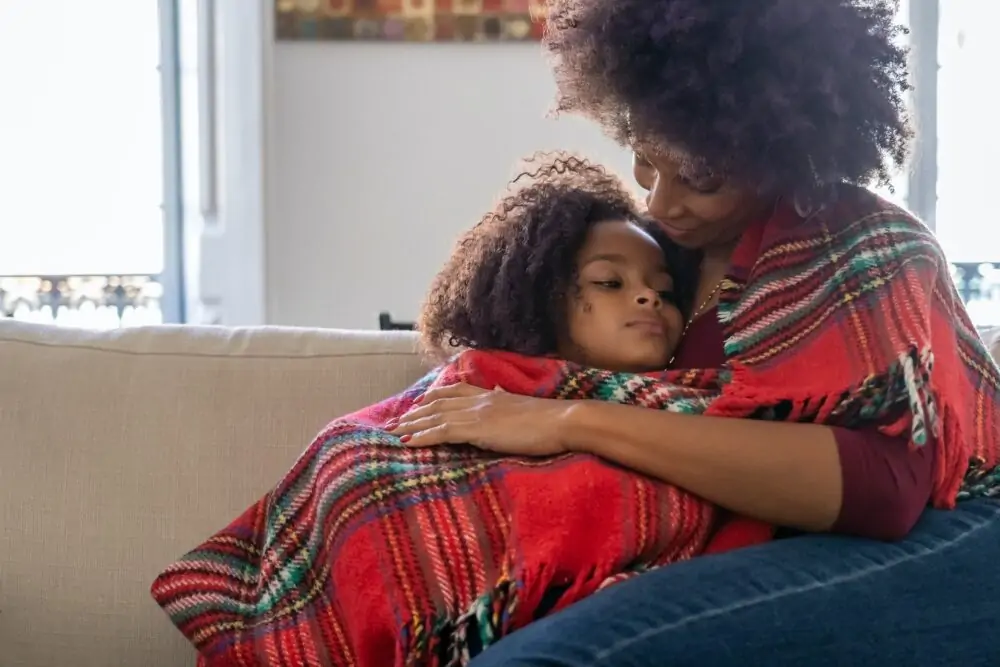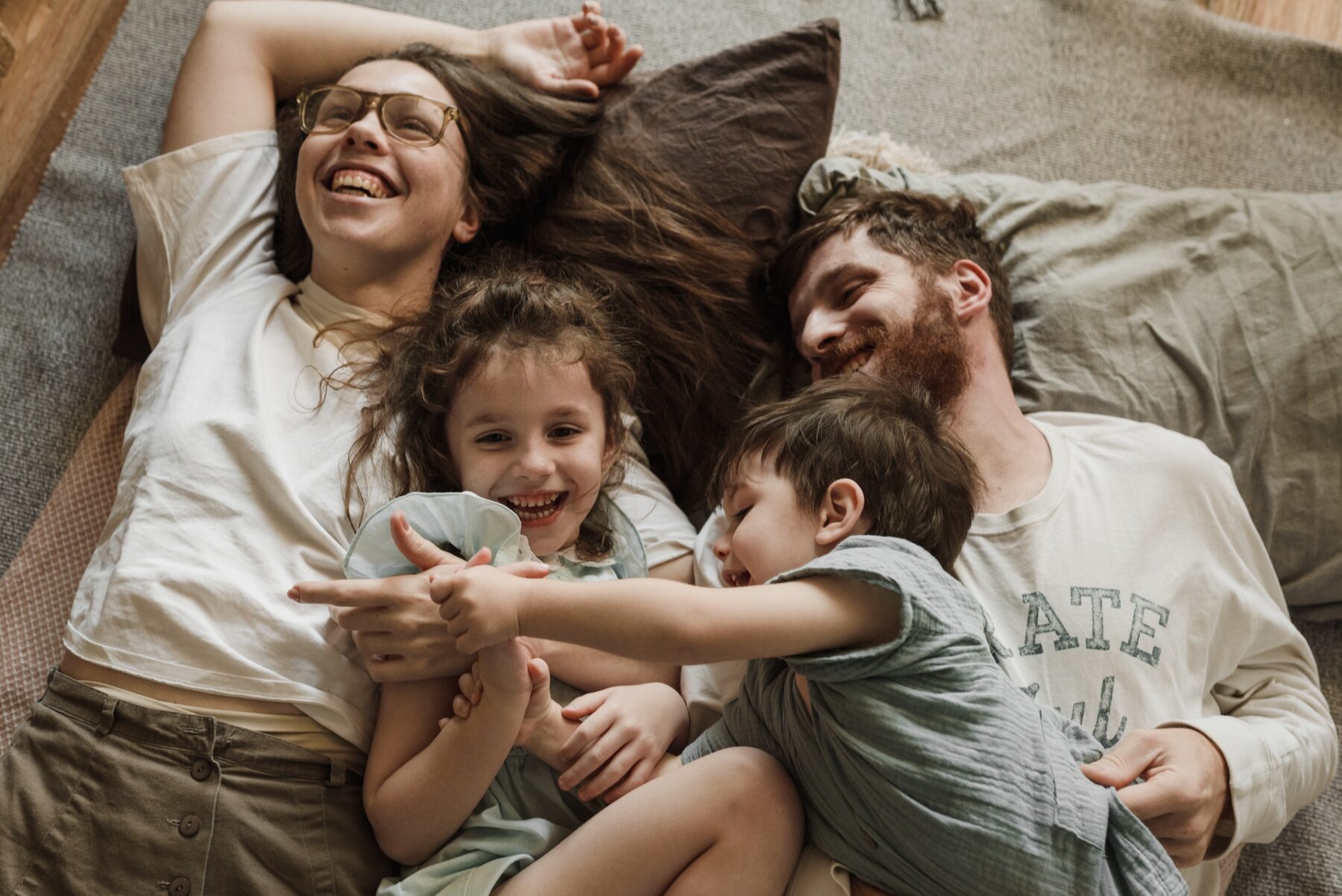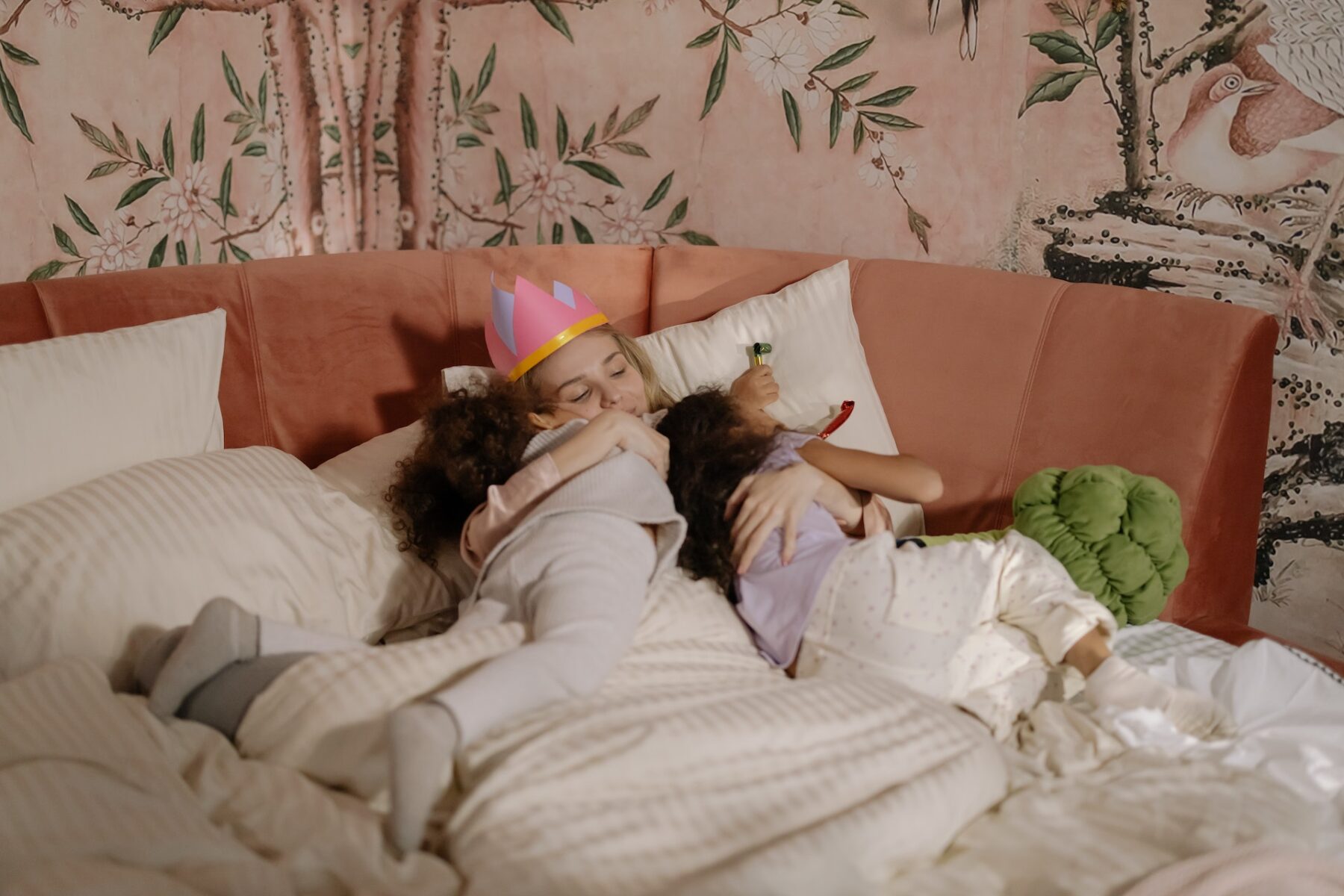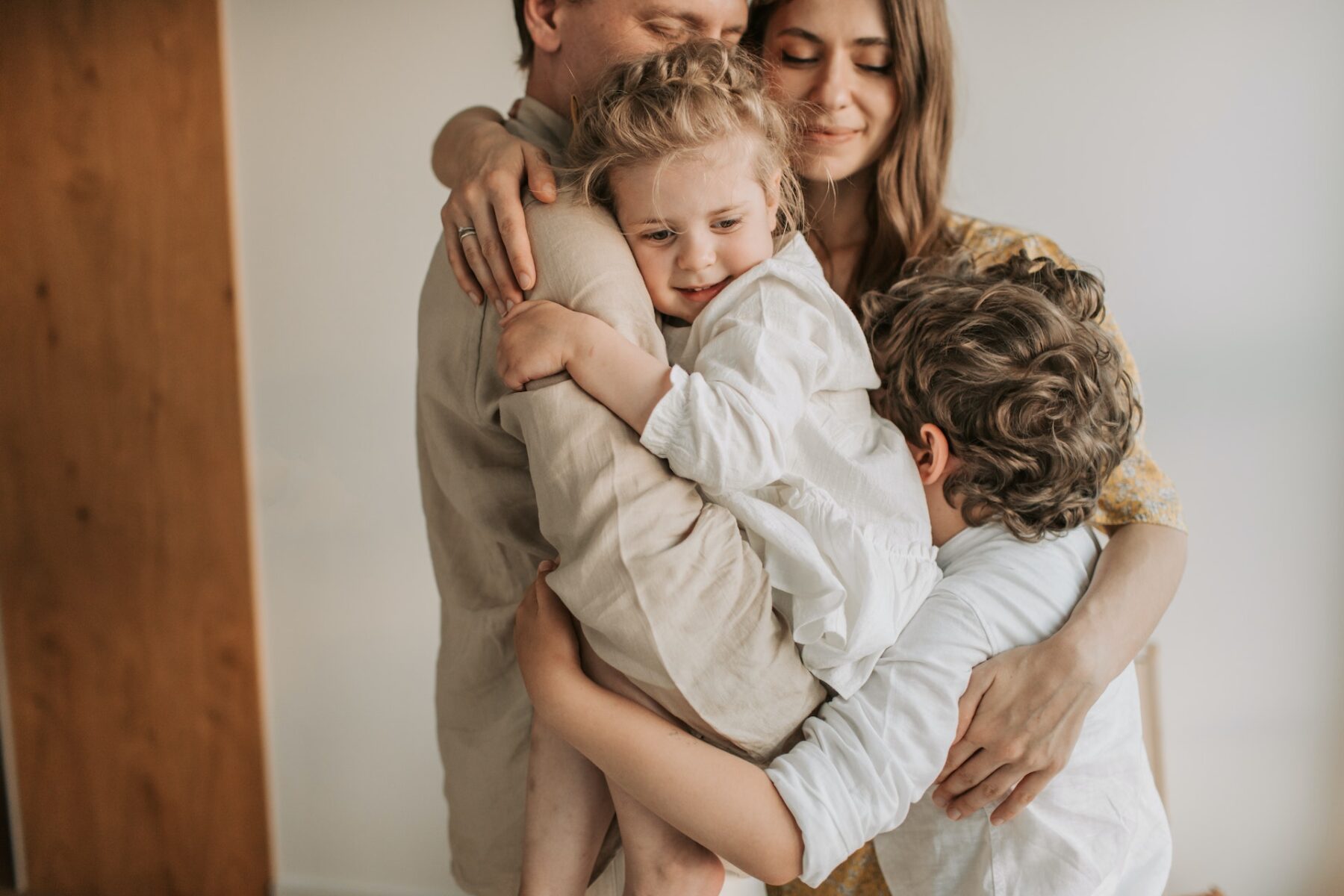Understanding Child Anxiety
11 min read
Last Modified 22 May 2025 First Added 31 May 2023

As parents, we all want our children to grow up to be happy and confident adults. But they may face certain challenges that can cause them to feel anxious and overwhelmed. Anxiety is a normal part of life and can affect children of all ages.
Anxiety in children can arise from a variety of factors, and while individual experiences may vary, several common factors contribute to anxiety in children.
These changes may include moving to a new home, starting a new school, or experiencing disruptions in their family structure such as divorce or the arrival of a new sibling. A study published in the Journal of Abnormal Child Psychology (Davis et al., 2018) found that environmental stressors, such as neighbourhood disadvantage, parental conflict, and residential mobility, were associated with increased anxiety symptoms in children.
High expectations from parents, teachers, or even self-imposed pressure to excel in school can lead to anxiety-related symptoms. A study conducted by Hatzichristou et al. (2016) and published in the Journal of Anxiety Disorders found that academic stressors, such as excessive homework, performance demands, and fear of failure, were associated with increased anxiety levels in school-aged children.
A study published in the Journal of Child Psychology and Psychiatry (Eley et al., 2015) identified specific genetic variations associated with increased risk for anxiety disorders in children.
Children may adopt anxiety-related behaviours from their parents or be influenced by their close friends’ anxious responses to stressful situations. A study published in the Journal of the American Academy of Child & Adolescent Psychiatry (Creswell et al., 2018) found that parental anxiety and over-involvement were associated with increased anxiety symptoms in children.
A study published in the Journal of Traumatic Stress (Murray et al., 2019) highlighted the strong association between traumatic events and anxiety symptoms in children.
It is essential to note that anxiety in children is often influenced by a combination of these factors and can vary from one individual to another
Recognising the specific causes of anxiety in a child is crucial for developing effective interventions, such as therapy, counselling, and stress reduction techniques.

Social anxiety is a specific form of anxiety and is arguably the most debilitating for children. Children with social anxiety often worry excessively about embarrassing themselves or being criticised, leading to avoidance of social situations. A study published in the Journal of Clinical Child & Adolescent Psychology (Rapee & Spence, 2004) found that fear of negative evaluation was a significant predictor of social anxiety symptoms in children.
A child’s self-esteem, self-perception, and belief in their own social competence play a role in their ability to navigate social interactions comfortably. Research published in the Journal of Abnormal Child Psychology (La Greca & Harrison, 2005) showed that low self-confidence and perceived social incompetence were related to social anxiety symptoms in children.
The quality of a child’s attachment to their primary caregivers can influence their social anxiety levels. Insecure attachment styles, characterised by a lack of trust and a fear of abandonment, may contribute to heightened social anxiety. A study published in the Journal of Anxiety Disorders (Brumariu & Kerns, 2008) found that children with an insecure attachment style, particularly an anxious-ambivalent attachment, were more likely to exhibit social anxiety symptoms.
Negative experiences, such as bullying, rejection, or humiliation, can contribute to the development of social anxiety in children. Traumatic social experiences can create a lasting impact, leading to heightened fear and anxiety in future social situations as shown in a study published in the Journal of Anxiety Disorders (Storch et al., 2004), which highlighted the link between negative peer experiences and social anxiety symptoms in children.

Anxiety is a normal part of childhood and can serve as a protective mechanism in certain situations. However, it becomes a concern when it starts to interfere with a child’s everyday life and overall well-being.
If a child consistently experiences intense distress or fear that is disproportionate to the situation or appears to be out of control, it may be a sign of excessive anxiety.
Anxiety becomes problematic when it significantly impairs a child’s ability to function in their daily life. This can manifest as avoidance of normal activities, difficulty concentrating in school, reluctance to participate in social interactions or challenges in completing tasks due to anxiety-related symptoms.
Children with problematic anxiety may exhibit physical symptoms such as frequent headaches, stomachaches, fatigue, or trouble sleeping. These physical complaints may be linked to heightened anxiety levels and can be indicators of distress.
If a child regularly avoids situations or activities due to anxiety, it can be a sign that their anxiety is becoming problematic. Avoidance can reinforce anxiety and limit a child’s opportunities for growth and development. Significant changes in a child’s behaviour, such as increased irritability, moodiness, clinginess, or frequent tearfulness, may be indicators of problematic anxiety.
Anxiety that affects a child’s relationships with family, friends, or peers is a cause for concern. If a child’s anxiety prevents them from forming and maintaining healthy relationships or leads to social isolation, it is important to address the issue.
If parents or caregivers notice these signs and are concerned about a child’s anxiety, it is recommended to seek professional help from a qualified mental health provider. It is crucial to remember that every child is unique, and anxiety symptoms may vary. Trusting one’s instincts as a caregiver and seeking professional guidance can help ensure that a child receives the support they need to manage their anxiety effectively and thrive in their everyday life.
Parents play a crucial role in recognising and addressing anxiety in their children. Being aware of the signs and symptoms of anxiety can help parents identify when their child may need professional support.
These signs can include:
It is also common to see changes in appetite and eating patterns due to anxiety. Some children may have a decreased appetite, while others may seek comfort in food and overeat.
For further information and guidance, the NHS website provides reliable information on anxiety in children and young people. You can refer to the following for additional details: NHS – Anxiety in children and young people.

When a child is struggling with anxiety, parents and carers can play a vital role in providing support and helping them manage their anxiety effectively. Making even small changes to their daily routine can make a significant difference in reducing anxiety levels.
The following suggested approaches aim to create a supportive environment and promote healthy coping skills.
1. Establish a calm and reassuring environment.
2. Maintain a consistent daily routine, provide reassurance, and encourage open communication.
3. Acknowledge and validate your child’s emotions. Let them know it’s normal to feel anxious and that you are there to support them.
4. Teach your child relaxation techniques, such as deep breathing exercises, mindfulness, or progressive muscle relaxation.
5. Encourage regular physical activity to help reduce anxiety.
6. Promote healthy sleep habits by establishing a consistent bedtime routine, creating a calm sleep environment, and limiting exposure to screens before bedtime.
7. Teach your child healthy ways to cope with anxiety, such as problem-solving, positive self-talk, and reframing negative thoughts.
8. If your child is avoiding certain situations due to anxiety, help them face their fears gradually and with a trusted carer there to provide support. Gradual exposure can desensitise them to anxiety-provoking situations and build confidence.
9. Identify and minimise exposure to triggers that contribute to your child’s anxiety.
10. Support your child in building positive social connections. Encourage them to engage in activities with peers, join clubs or organisations of interest, and foster friendships that provide a sense of support and belonging.
Seek professional help when needed:
If your child’s anxiety significantly impacts their daily life and persists despite your efforts, seek professional help. A mental health professional can provide assessment, therapy, or other appropriate interventions tailored to your child’s needs.
Toys and playful activities can be valuable tools in preventing and addressing anxiety in children, and giving your child a balanced play diet allows them to find activities that suit their frame of mind at any specific time and reduce anxiety if needed.
1. Sensory toys engage a child’s senses and can be calming. Examples include fidget toys and kinetic sand. These toys can help redirect anxious energy and provide a soothing sensory experience.
2. Artistic activities allow children to express themselves creatively and can serve as a therapeutic outlet for anxiety. Provide arts and crafts supplies like colouring books, sketchbooks, coloured pencils, or clay. Engaging in art can help children relax and focus their attention on a calming activity.
3. Imaginative play allows children to explore different scenarios and express their emotions. Provide props like dress-up clothes, dolls, action figures, or playsets. Children can act out situations, role-play, and work through their feelings safely and playfully.
4. Mindfulness games can teach children to be present in the moment and manage anxiety. Games like breathing exercises, guided meditation apps for kids, or mindful movement activities (e.g. yoga for children) can help children relax and develop mindfulness skills.
5. Cooperative board games foster teamwork and collaboration while reducing competition and stress. These games encourage communication, problem-solving, and can help children learn to manage anxiety in a supportive and cooperative setting.
6. Problem-solving activities such as puzzles, jigsaw and logic puzzles, can be engaging and promote concentration and focus. They can help children redirect their attention away from anxious thoughts and provide a sense of accomplishment upon completion.
7. Physical activity and outdoor toys can be effective in reducing anxiety. Activities like bike riding, playing catch, skipping games, or simply exploring nature promotes the release of endorphins and provides a change of scenery that can positively impact mood.
8. Activities that engage the senses and promote relaxation can be beneficial for anxious children. Examples include bubble baths, using essential oils, playing with calming sensory bottles, or engaging in gentle massage techniques.
Remember, the suitability of toys and activities may vary depending on the child’s age, interests, and preferences. It’s important to observe and engage with your child to determine which toys and activities resonate with them and help them manage their anxiety effectively.
References:
Davis, M. T., Holmes, M. R., & Voisin, D. R. (2018). The role of environmental stressors and resilience on psychological distress among African American adolescents: A social-ecological perspective. Journal of Abnormal Child Psychology, 46(7), 1437-1448.
Hatzichristou, C., Belfer, M. L., & Nottelmann, E. (2016). Anxiety symptoms in clinically referred children and adolescents: Evidence for subgroups. Journal of Anxiety Disorders, 43, 87-96.
Eley, T. C., Hudson, J. L., Creswell, C., Tropeano, M., Lester, K. J., Cooper, P., … & Napolitano, M. (2015). Therapygenetics: The 5HTTLPR and response to psychological therapy. Molecular Psychiatry, 20(6), 655-662.
Rapee, R. M., & Spence, S. H. (2004). The aetiology of social phobia: Empirical evidence and an initial model. Clinical Psychology Review, 24(7), 737-767.
La Greca, A. M., & Harrison, H. M. (2005). Adolescent peer relations, friendships, and romantic relationships: Do they predict social anxiety and depression? Journal of Clinical Child & Adolescent Psychology, 34(1), 49-61.
Brumariu, L. E., & Kerns, K. A. (2008). Parent-child attachment and internalizing symptoms in childhood and adolescence: A review of empirical findings and future directions. Development and Psychopathology, 20(3), 789-819.
Storch, E. A., Masia-Warner, C., Dent, H. C., Roberti, J. W., & Fisher, P. H. (2004). Psychometric evaluation of the Social Anxiety Scale for Adolescents and the Social Phobia and Anxiety Inventory for Children: Construct validity and normative data.
To read our disclaimers, please click here.